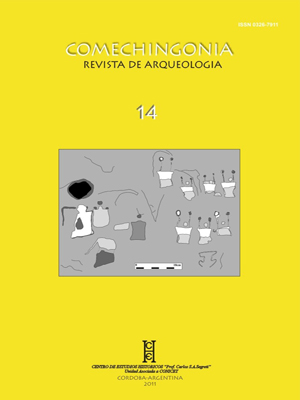Experiencia de la muerte y la representación de las personas en las prácticas funerarias del valle Calchaquí Norte
Main Article Content
Abstract
This article claims that we should be careful and reflexive regarding the theoretical tools and concepts that we employ to interpret the past. We should not assume that the nature of the categories, interactions, institutions, and social and experiential spheres of past societies was similar to that found in modernity (and late modernity) and capitalism. Taking into account the multiple ways in which the world is classified and ordered, and subjectivity constructed, and based on ethnographic knowledge, this paper examines the material order of funerary practices in the Calchaqui Valley, Southern Andes, during the Late Period (1000 1450 AD), in order to explore: 1) the way in which death was categorized and experienced, and 2) the nature of personhood in this socio-historical context. After analyzing the location and architecture of 160 burials, as well as the goods deposited in each of them, we argue that death was an integral component of daily and domestic experiences and relations and that individuality dissolved into a communal matrix, producing relational personhoods.
Downloads
Article Details
Section
Artículos
COPYLEFT
This work is licensed under a Creative Commons Attribution-Share Alike 4.0 International License.
COPYRIGTH
The copyright and copyrights of the articles are held by the authors themselves.
This will be indicated in each article, as well as the Copyleft license described above.
How to Cite
Experiencia de la muerte y la representación de las personas en las prácticas funerarias del valle Calchaquí Norte. (2011). Comechingonia. Revista De Arqueología, 14(1), 23-54. https://doi.org/10.37603/2250.7728.v14.n1.17891




